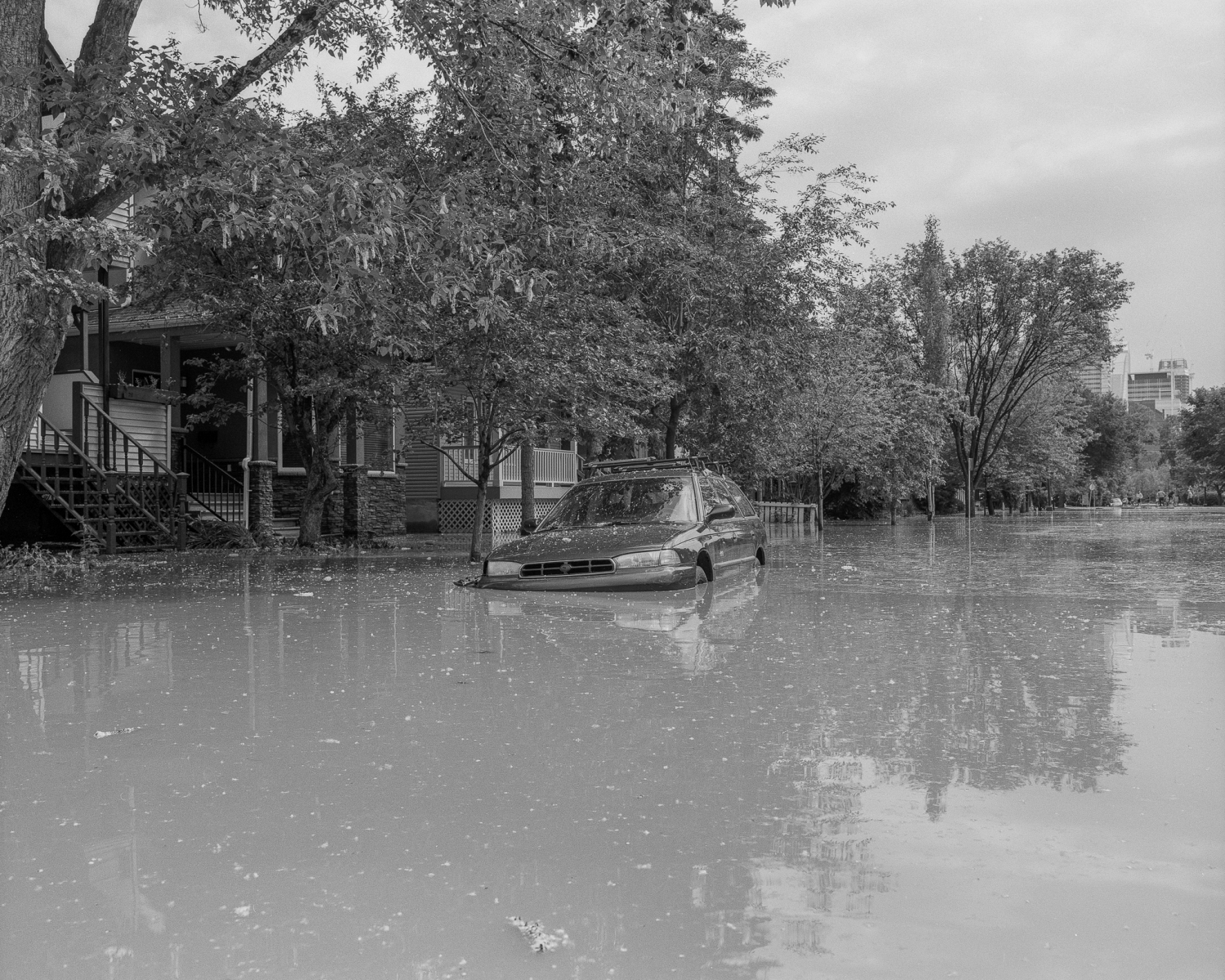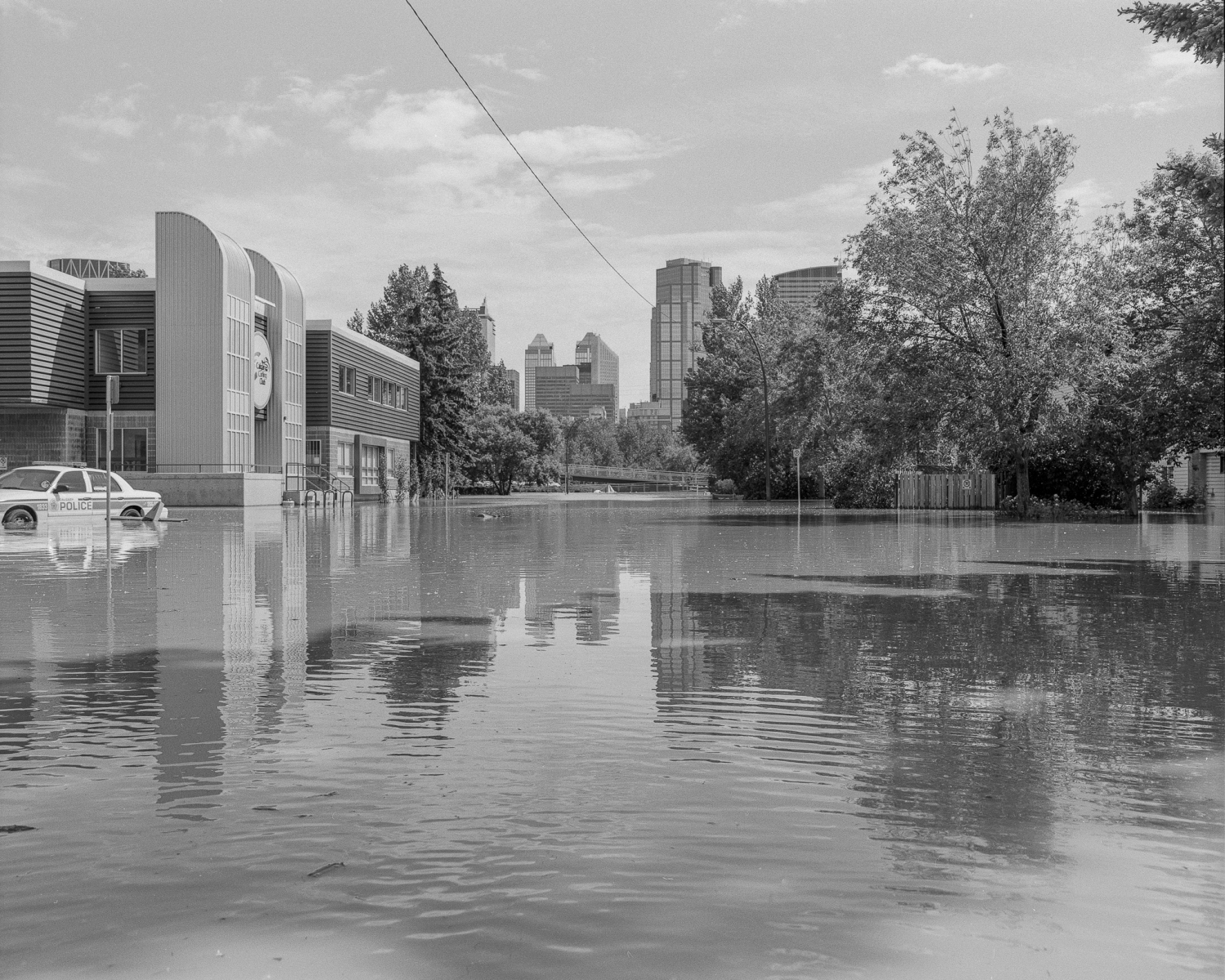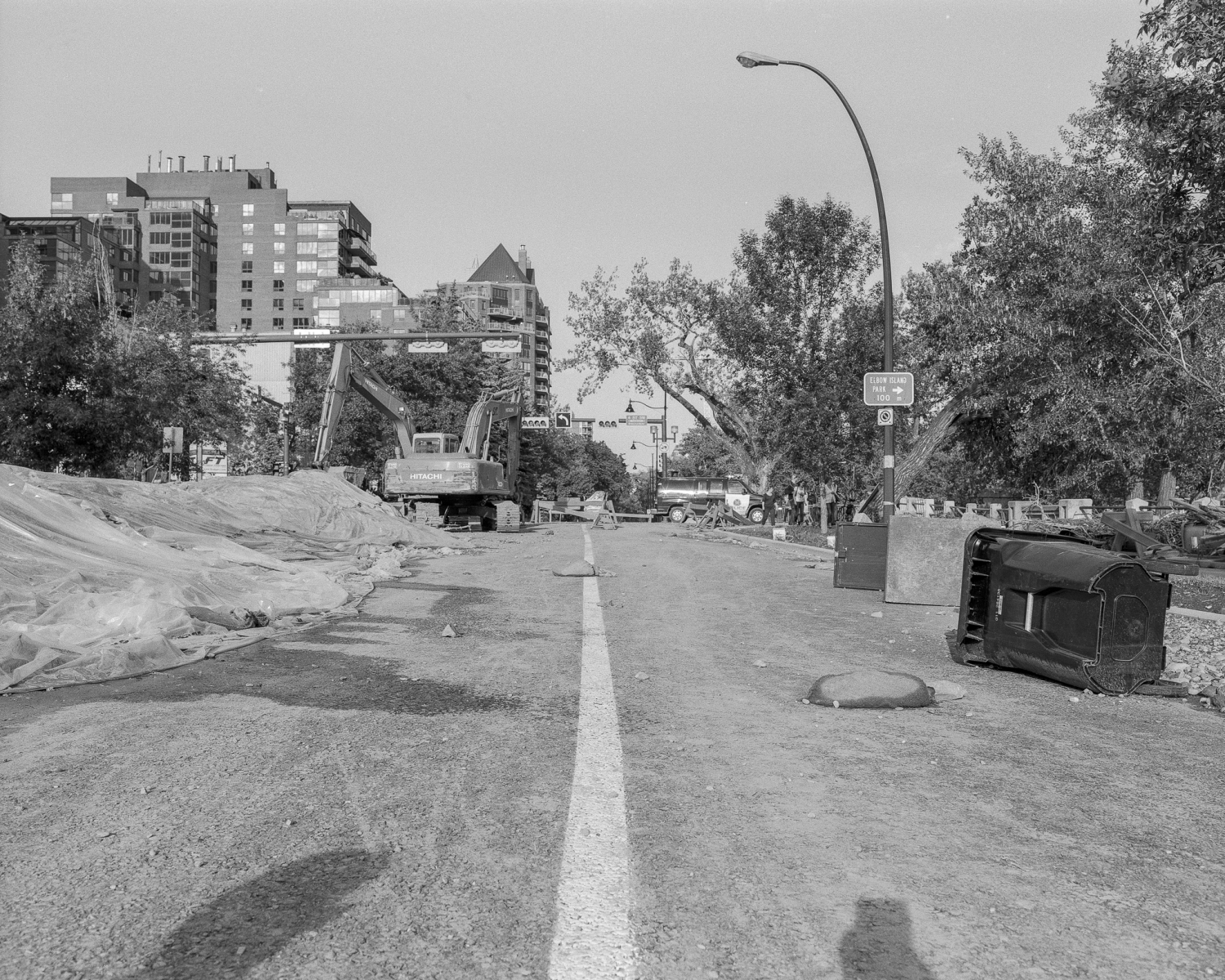In June of 2013, Southern Alberta experienced one of the worst floods in its history. In Calgary, the Bow and Elbow rivers burst their banks and spilled into downtown just weeks before the Calgary Stampede. Following the flood, the response of the city and province became a rallying cry for a type of Albertan work ethic. “Hell or High Water,” the Calgary Stampede would declare as enormous forces gathered to ensure the Stampede could continue, that life could go on and that things could return to normal as quickly as possible.
However, this attitude glorified an Albertan “spirit” tied to an imagined cowboy identity, toxic masculinity, poor land stewardship, and racial injustices. Just like the flooding erased and redefined what Calgary’s downtown looked like for a short period, a rapid return to normalcy also masked numerous injustices and erased the possibility of considering the dangers of the status quo.
In their strange tranquillity, these images capture a space transformed, reclaimed by nature, and ripe with theoretical prospects left unrealized. These images create a dialogue around consumerism, capitalism, environmentalism, global warming and climate change, land stewardship, social and racial injustices, and the notion of what it means to be an Albertan. In remembering the flooding through these images I invite viewers to consider what possibilities the flood exposed and what injustices a return to normalcy quickly erased.

























